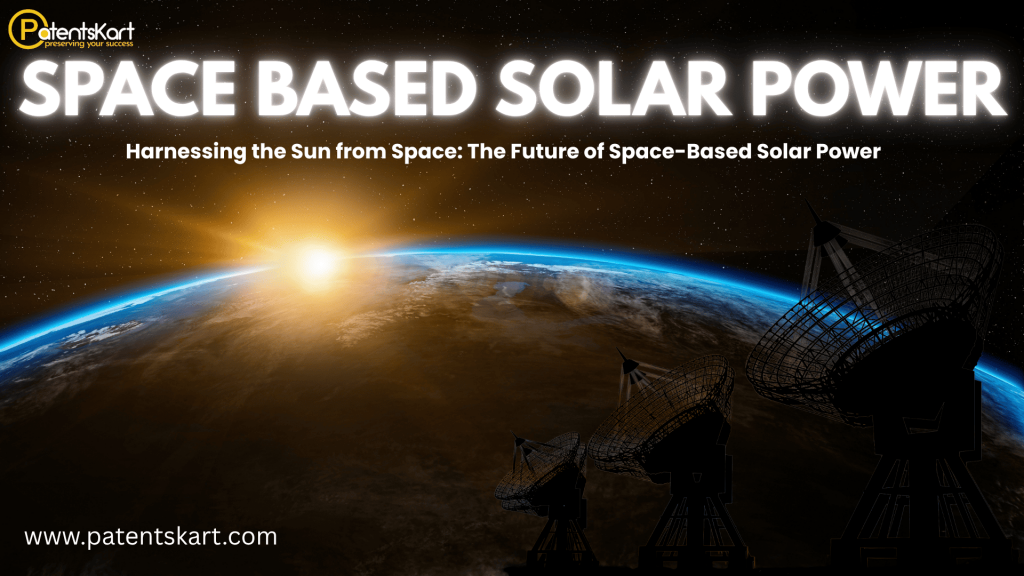What Is Space-Based Solar Power and How Does It Work?
Space-based solar power (SBSP) is an advanced renewable energy solution that involves capturing solar energy in space and transmitting it to Earth using wireless technologies. Unlike terrestrial solar panels, SBSP systems collect uninterrupted solar radiation by positioning satellites equipped with massive solar panels in orbit. These satellites convert sunlight into electricity and beam the energy down to Earth using either microwave or laser transmission. The microwave method uses large antennas (rectennas) to receive and convert the signal, while the laser method is more compact but affected by atmospheric conditions.
The advantage? The sun never sets in space, so SBSP promises constant, high-intensity energy—day and night, regardless of weather. This could allow countries to stabilize their grids and reduce fossil fuel dependency.
What Are the Main Benefits of Space-Based Solar Power?
- 24/7 Energy Availability: Satellites in geostationary orbit receive constant sunlight, enabling a steady energy supply to meet peak and base load demands.
- Climate Independence: Unlike ground-based solar, SBSP is unaffected by clouds, rain, or seasonal changes, ensuring predictable energy outputs.
- Decarbonization: SBSP can reduce global reliance on fossil fuels and significantly cut greenhouse gas emissions, playing a key role in climate targets.
- Global Accessibility: Power can be delivered to remote, disaster-prone, or underdeveloped areas that traditional infrastructure can’t reach.
- Energy Security: SBSP offers a resilient energy source in times of war, geopolitical disruption, or climate disaster.
- Support for Emerging Technologies: SBSP can power data centers, electric vehicles, CCUS systems, hydrogen fuel generation, and even future lunar or Martian colonies.
- Long-Term Cost Efficiency: Though initial investment is high, long-term operational costs are low due to reduced maintenance, continuous output, and technological advancements in satellite deployment.
These benefits make SBSP a potential game-changer in the global clean energy transition.
How Is Space-Based Solar Power Different from Traditional Solar Power?
- Location: Traditional solar panels are on Earth; SBSP systems orbit in space and avoid atmospheric and night-time interruptions.
- Efficiency: SBSP receives uninterrupted solar radiation, unlike ground panels that are limited by weather, pollution, and day-night cycles.
- Transmission: SBSP transmits energy via microwaves or lasers; traditional systems use physical wiring, leading to transmission losses over long distances.
This unique model positions SBSP as a superior alternative, especially for 24/7 energy needs in critical sectors.
What Are the Challenges Holding Back Space-Based Solar Power?
Despite its promise, SBSP faces several barriers:
- High Initial Costs: Launching, assembling, and maintaining satellites remains expensive, although reusable launch systems are reducing these costs.
- Transmission Losses: Wireless power transmission is still being optimized to minimize conversion inefficiencies.
- Safety Concerns: Beaming high-intensity energy to Earth raises environmental and human safety issues, particularly with beam control.
- Space Debris and Collision Risks: Satellite congestion and orbital debris increase the risk of equipment damage and loss of service.
- Regulatory Uncertainty: Global standards for space-based power are still evolving, complicating international collaborations.
However, ongoing research, public-private partnerships, and government support are addressing these hurdles steadily.
How Mature Is Space-Based Solar Power?
Below is the current Technology Readiness Level (TRL) comparison between Microwave and Laser SBSP:
| SBSP Method | TRL | Total Patents | Vintage Years | Countries Covered |
| Microwave SBSP | 7 | 440 | 46 | 13 |
| Laser SBSP | 5 | 210 | 32 | 6 |

Observation: Microwave SBSP is significantly more mature and closer to commercial viability, with multiple successful ground demos.
Who Are the Leading Companies, Startups, Universities, and Labs in Space-Based Solar Power?
Major Turnkey Providers:
- Space Solar (UK) – Microwave-based system for national grid support
- Virtus Solis (USA) – Competing with fossil fuels by beaming power directly to the grid
- Astrostrom (EU) – Lunar-focused power solutions
- Celestia Energy (Global) – Laser Space-Based Solar Power for lunar bases
- International Electric Co. – Pioneer in space-to-Earth energy transmission
Component & Technology Providers:
- Aetherflux – Offers both microwave and laser transmission modules
- Sirin Orbital Systems AG – Specializes in modular satellite designs
- Space Power – Laser transmitter innovation
- Rovial Space – Compact energy storage for Space-Based Solar Power
Notable Startups:
- Star Catcher – Building a global orbital energy grid
- Alvior – Targets full-scale Space-Based Solar Power deployment by 2050
- Lumen Orbit – Developing atmospheric laser pathways
- Orbital Lasers – Enhancing beam precision for urban areas
Leading Universities and Labs:
- Caltech SSPP (USA): $100M modular satellite power project
- Xidian University (China): World’s first Space-Based Solar Power full-system ground test
- Imperial College London & QMUL (UK): Focus on beam steering and antenna scaling
- AFRL (USA): Microwave beaming for defense and commercial applications
- NRL (USA): Ground-to-space DC conversion and beam control
- Tsinghua University (China): Laser-Space-Based Solar Power infrastructure for space colonies
These institutions and innovators are actively shaping the SBSP future through research, patents, and prototypes.
What Is the Future Market Outlook for Space-Based Solar Power?
| Timeframe | Technology Outlook | Commercial Potential | Likelihood |
| Short Term (1–5 y) | Ground demos, drone-level beaming tests | High-cost, niche use cases | Moderate |
| Mid Term (5–10 y) | Improved transmission, private-public partnerships | Industrial use, rural power | High |
| Long Term (10+ y) | Orbital constellations, grid integration, global rollout | Mass adoption, smart grids | Very High |

What Are the Key Standards and Regulatory Frameworks?
| Standard Body | Focus Area | SBSP Method |
| ITU-R | Frequency allocation for wireless transmission | Microwave SBSP |
| IEC | Energy efficiency & safety | Microwave SBSP |
| UN COPUOS | Space debris and operational governance | Both |
| ISO | Debris mitigation protocols | Both |
| NASA OTPS | US policy & research framework | Both |
| ESA SOLARIS | European tech development program | Microwave SBSP |
What Are the Key Applications of Space-Based Solar Power?
- Grid Integration: Delivering power directly to national and regional grids, reducing blackout risks.
- Disaster Relief: Powering areas hit by natural disasters where terrestrial infrastructure is damaged.
- Remote Locations: Energy for mining operations, arctic research stations, and undeveloped regions.
- Military and Defense: Secure, mobile energy for forward operating bases.
- Space Missions: Powering lunar bases, space stations, and interplanetary vehicles.
- IoT and Smart Cities: Backing always-on connectivity and data processing infrastructure.
Will Space-Based Solar Power Replace Fossil Fuels in the Future?
Given the potential to meet 24/7 global energy demand, SBSP is one of the most scalable replacements for fossil fuels. With cost reduction in satellite launches and improvements in laser and microwave transmission, SBSP could eventually supplement or even replace a significant portion of fossil-fuel-based generation. Countries investing early will gain strategic energy independence.
Can Satellites Really Provide Electricity to Earth?
Yes. Pilot projects have already demonstrated energy transmission from satellites to drones and ground stations. The next stage is scaling that for grid use—something entities like Virtus Solis, Aetherflux, and Enel Green Power are actively pursuing, along with multiple university-led prototypes.
How PatentsKart Can Help You in the Space-Based Solar Power Space
- Patent Landscape Analysis: Get insights into the most active SBSP technology areas and white spaces.
- Competitive Intelligence: Know what your competitors are filing and developing.
- Tech Scouting & Licensing: Identify collaboration or acquisition opportunities from universities and startups.
- IP Strategy Consulting: We help you develop a strong IP strategy that aligns with SBSP commercialization goals.
FAQs
What is space-based solar power?
SBSP is the collection of solar energy in space and transmission to Earth via microwave or laser beams.
What are the advantages of Space-Based Solar Power over traditional solar power?
It works 24/7, unaffected by clouds or weather, and can power remote regions.
Who are the top companies in space solar power?
Space Solar, Virtus Solis, Celestia Energy, Aetherflux, Alvior, and Star Catcher.
How far are we from real-world Space-Based Solar Power deployment?
Microwave SBSP may achieve early deployment by 2030; laser SBSP is further behind.
Is Space-Based Solar Power safe?
Yes, with proper beam control, both microwave and laser SBSP can be operated safely.
Recent Blogs from PatentsKart
- What Is Marine Power Technology and Why Is It the Future of Clean Energy?
- Smart Ring Technology: The Next Wave of Wearable Innovation
- Pulp Bottles Technology: The Future of Sustainable Packaging
Conclusion
Space-based solar power is no longer science fiction—it’s a scientifically validated, rapidly evolving solution to the world’s energy crisis. By leveraging continuous solar input from orbit, SBSP can fuel everything from homes to space missions. Companies like Virtus Solis, Aetherflux, Caltech SSPP, and Xidian University are proving that satellites can power Earth.
With the right partnerships, regulations, and IP support, the SBSP revolution could be closer than we think—and PatentsKart is here to help you lead it.
Visit www.patentskart.com or contact us at info@patentskart.com to start your SBSP journey today.







